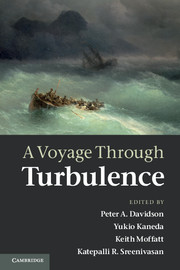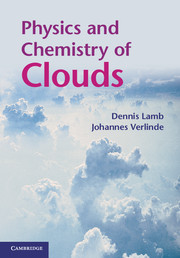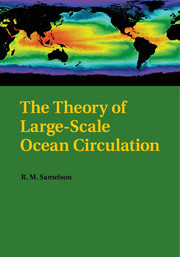Refine search
Actions for selected content:
8126 results in Fluid dynamics and solid mechanics
3 - Characterization of stress and flux dynamics: elements required for modelling
-
- Book:
- Modelling Turbulence in Engineering and the Environment
- Published online:
- 05 November 2012
- Print publication:
- 20 October 2011, pp 33-59
-
- Chapter
- Export citation
2 - The exact equations
-
- Book:
- Modelling Turbulence in Engineering and the Environment
- Published online:
- 05 November 2012
- Print publication:
- 20 October 2011, pp 13-32
-
- Chapter
- Export citation
Contents
-
- Book:
- Modelling Turbulence in Engineering and the Environment
- Published online:
- 05 November 2012
- Print publication:
- 20 October 2011, pp v-vi
-
- Chapter
- Export citation
Index
-
- Book:
- Modelling Turbulence in Engineering and the Environment
- Published online:
- 05 November 2012
- Print publication:
- 20 October 2011, pp 373-379
-
- Chapter
- Export citation
Preface
-
- Book:
- Modelling Turbulence in Engineering and the Environment
- Published online:
- 05 November 2012
- Print publication:
- 20 October 2011, pp vii-xi
-
- Chapter
- Export citation
Frontmatter
-
- Book:
- Modelling Turbulence in Engineering and the Environment
- Published online:
- 05 November 2012
- Print publication:
- 20 October 2011, pp i-iv
-
- Chapter
- Export citation
OPTIMAL INVESTMENT AND REINSURANCE IN A JUMP DIFFUSION RISK MODEL
-
- Journal:
- The ANZIAM Journal / Volume 52 / Issue 3 / January 2011
- Published online by Cambridge University Press:
- 14 October 2011, pp. 250-262
-
- Article
-
- You have access
- Export citation

A Voyage Through Turbulence
-
- Published online:
- 07 October 2011
- Print publication:
- 08 September 2011

Physics and Chemistry of Clouds
-
- Published online:
- 07 October 2011
- Print publication:
- 28 April 2011

The Theory of Large-Scale Ocean Circulation
-
- Published online:
- 07 October 2011
- Print publication:
- 27 June 2011
Contents
-
- Book:
- A Voyage Through Turbulence
- Published online:
- 07 October 2011
- Print publication:
- 08 September 2011, pp v-viii
-
- Chapter
- Export citation
2 - Prandtl and the Göttingen school
-
-
- Book:
- A Voyage Through Turbulence
- Published online:
- 07 October 2011
- Print publication:
- 08 September 2011, pp 40-100
-
- Chapter
- Export citation
13 - Epilogue: a turbulence timeline
-
-
- Book:
- A Voyage Through Turbulence
- Published online:
- 07 October 2011
- Print publication:
- 08 September 2011, pp 426-434
-
- Chapter
- Export citation
List of contributors
-
- Book:
- A Voyage Through Turbulence
- Published online:
- 07 October 2011
- Print publication:
- 08 September 2011, pp ix-x
-
- Chapter
- Export citation
4 - G.I. Taylor: the inspiration behind the Cambridge school
-
-
- Book:
- A Voyage Through Turbulence
- Published online:
- 07 October 2011
- Print publication:
- 08 September 2011, pp 127-186
-
- Chapter
- Export citation
11 - Satish Dhawan
-
-
- Book:
- A Voyage Through Turbulence
- Published online:
- 07 October 2011
- Print publication:
- 08 September 2011, pp 373-392
-
- Chapter
- Export citation
Frontmatter
-
- Book:
- A Voyage Through Turbulence
- Published online:
- 07 October 2011
- Print publication:
- 08 September 2011, pp i-iv
-
- Chapter
- Export citation
3 - Theodore von Kármán
-
-
- Book:
- A Voyage Through Turbulence
- Published online:
- 07 October 2011
- Print publication:
- 08 September 2011, pp 101-126
-
- Chapter
- Export citation
7 - Stanley Corrsin
-
-
- Book:
- A Voyage Through Turbulence
- Published online:
- 07 October 2011
- Print publication:
- 08 September 2011, pp 238-275
-
- Chapter
- Export citation
10 - Robert H. Kraichnan
-
-
- Book:
- A Voyage Through Turbulence
- Published online:
- 07 October 2011
- Print publication:
- 08 September 2011, pp 329-372
-
- Chapter
- Export citation
